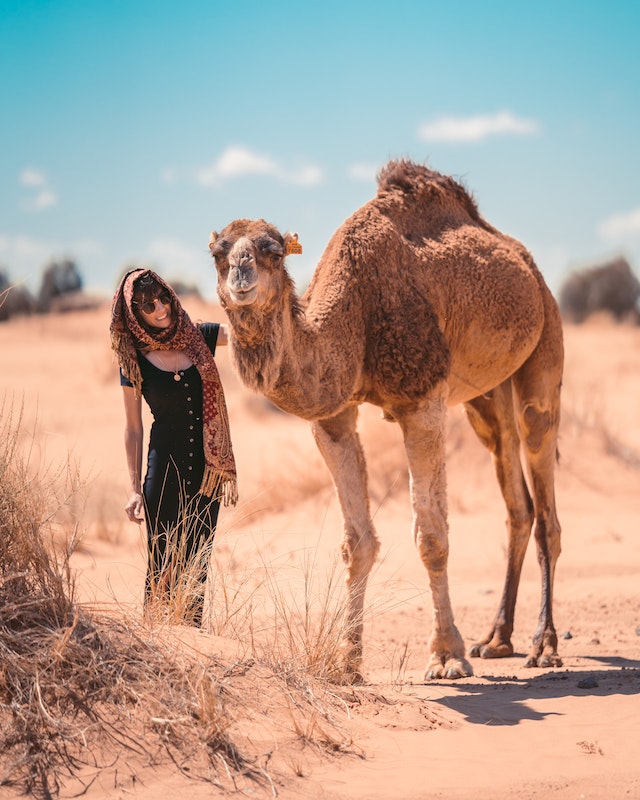
The camel is a fascinating and unique animal that has captured the imaginations of people all over the world for thousands of years. Known for their distinctive hump and ability to survive in harsh desert environments, camels have played a crucial role in the lives of many cultures throughout history. In this blog, we will explore the world of camels, their anatomy, behavior, and cultural significance. We will also discuss their role in modern-day society and the challenges they face in the wild.
Anatomy of a Camel:
Camels are large, hooved mammals that belong to the family camel idae. There are two species of camel: the dromedary, or one-humped camel, and the Bactrian camel, or two-humped camel. Both species are well adapted to life in arid environments, with specialized physical characteristics that allow them to survive in the desert.
Most distinctive features:
One of the most distinctive features of the camel is its hump. The hump is a reservoir of fat that camels can draw on for energy when food and water are scarce. The dromedary camel has a single hump, while the Bactrian camel has two. The hump is not used for water storage, as is often believed, but rather for energy storage. Camels also have long, slender legs that are well-suited for walking on sand. Their feet are wide and padded, which helps them to grip the ground and prevent sinking in the sand. They also have two sets of eyelashes and bushy eyebrows that protect their eyes from the sun and sand.
Behavior of Camels:
Camels are social animals that live in herds. They have a hierarchical social structure, with dominant males leading the herd. Female camels, or cows, are the primary caregivers for their young, and will often nurse their calves for up to two years. Camels are well adapted to life in the desert, and can survive for long periods of time without food or water. They can go up to two weeks without drinking water, and can lose up to 25% of their body weight without suffering ill effects. When they do have access to water, camels can drink up to 40 gallons at a time.
Interesting behaviors of camels:
One of the most interesting behaviors of camels is their ability to conserve water. When camels exhale, they release water vapor into the air. This vapor is then trapped in their nostrils and reabsorbed into their body, allowing them to conserve water and stay hydrated.
Cultural Significance of Camels:
Camels have played a crucial role in the lives of many cultures throughout history. They have been used for transportation, food, and as a source of wool and leather. In the Middle East, camels have been an integral part of Bedouin culture for thousands of years. Bedouin tribes rely on camels for transportation, as well as for milk, meat, and wool.
Important role in the history:
Camels have also played an important role in the history of trade and commerce. The Silk Road, a network of trade routes that connected Asia and Europe, relied heavily on camels for transportation. The camel caravan was the primary means of transport for goods such as spices, textiles, and precious metals. Today, camels continue to play an important role in many cultures around the world. In some countries, camel racing is a popular sport, with races taking place on specially built tracks. Camels are also used in festivals and celebrations, such as the Pushkar Camel Fair in India, where thousands of camels are bought and sold each year.
Challenges Facing Camels in the Wild:
Despite their ability to survive in harsh desert environments, camels face many challenges in the wild. One of the biggest threats to wild camels is habitat loss. As human populations continue to grow and expand into previously untouched areas, camels are losing their natural habitats. This is particularly true in the Middle East, where the expansion of cities and agricultural land has led to the destruction of vast areas of desert.
Efforts to Protect Wild Camels:
Despite the many challenges facing wild camels, there are efforts underway to protect and conserve these amazing animals. One such effort is the establishment of protected areas and wildlife reserves. These areas provide a safe haven for wild camels and other desert species, allowing them to thrive in their natural habitats.
Conclusion:
In conclusion, camels are truly remarkable animals that have adapted to survive in some of the harshest environments on earth. They have played an important role in the lives of many cultures throughout history and continue to be an important part of many communities today. However, they face many challenges in the wild, including habitat loss, poaching, climate change, and the introduction of non-native species. Efforts to protect and conserve wild camels are underway, but more work is needed to ensure that these amazing animals continue to thrive for generations to come.
FAQs:
What are camels?
Camels are large mammals with long legs, a humped back, and a characteristic long neck. They are primarily found in the deserts of Asia and Africa, and are known for their ability to store water and withstand harsh desert conditions.
What are the two types of camels?
The two types of camels are the dromedary camel, also known as the Arabian camel, and the Bactrian camel. The dromedary camel has one hump, while the Bactrian camel has two humps.
What do camels eat?
Camels are herbivores, and their diet primarily consists of desert vegetation, such as thorny shrubs and dry grasses. They can also go for long periods of time without food or water.
How long can camels go without water?
Camels are adapted to survive in the desert and can go for several days without water. In fact, they can even lose up to 25% of their body weight in water and still survive.
Can camels be domesticated?
Yes, camels have been domesticated for thousands of years and are used for transportation, meat, milk, and wool. They are also used in tourism in many parts of the world.
How fast can camels run?
Camels can run up to 40 miles per hour, making them one of the fastest land animals in the desert.
Do camels spit?
Yes, camels can spit when they are angry or feel threatened. The spit is usually a mixture of saliva and stomach contents, and can be quite unpleasant.
How long do camels live?
Camels can live for up to 50 years, but their lifespan depends on various factors such as their environment, diet, and care.





